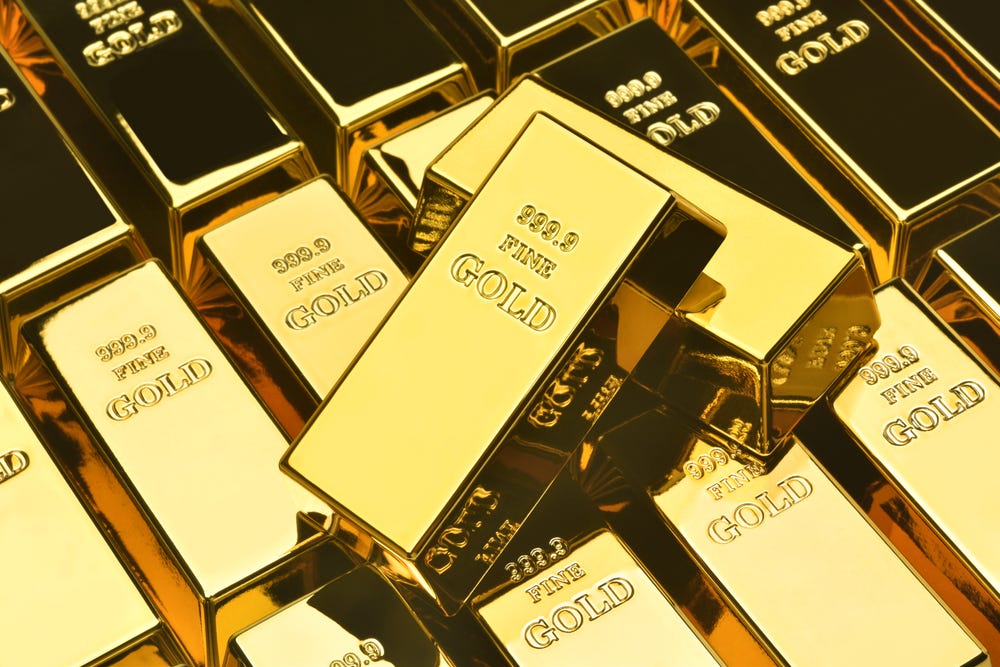Gold, also known as the “king of metals,” has fascinated human society for millennia. Its enticing attraction has spawned wars, driven exploration, and influenced economies. From the opulent adornments of ancient pharaohs to the present investment portfolios of global financiers, gold has remained a symbol of riches, power, and pride.
In this guide, we will talk about the rich tapestry of gold’s history, gold price, from ancient Mesopotamia and Egypt to its critical position in today’s global financial system. Understanding the intricate threads of gold’s past is more than just a nostalgic exercise; it is a necessary basis for making informed investing decisions today.
Ancient Origins of Gold
The history of gold began in the mists of antiquity when ancient civilizations discovered its dazzling characteristics. Mesopotamian artists made superb gold jewelry, while Egyptian pharaohs wore elaborate golden headdresses and burial masks. The Greeks and Romans created gold coins as emblems of imperial power and prosperity, cementing gold’s status as a means of commerce and store of value.
As civilizations expanded, so did the desire for gold. Its scarcity and intrinsic beauty gave it enormous value, making it a prized commodity in trade and tribute. From the ancient Silk Road to the Mediterranean trade routes, gold became a common denominator in the interchange of products and ideas that cut across cultural and geographical borders.
The Gold Standard Era
The introduction of the gold standard in the nineteenth century represented a watershed moment in the history of gold. Nations tied their currency to a predetermined amount of gold to maintain global monetary stability and confidence. The gold standard facilitated worldwide trade and investment, paving the way for unparalleled economic expansion and prosperity.
However, the gold standard wasn’t without problems. Fixed exchange rates limited monetary policy flexibility, worsening economic downturns and financial crises. The Great Depression of the 1930s dealt a devastating blow to the gold standard, forcing countries to abandon it in favor of more flexible exchange rate regimes.
Gold Rushes and the Expansion of Gold Mining
The discovery of massive gold reserves in places like California, Australia, and South Africa prompted wild gold rushes that changed landscapes and communities. Prospectors from all over the world came to these newly discovered goldfields in pursuit of money, resulting in the fast expansion of gold mining enterprises.
Gold rushes had far-reaching effects, both beneficial and negative. They spurred economic expansion and infrastructure development, resulting in advances in mining technology and practices. However, they also took a toll on the environment and indigenous tribes, creating a trail of environmental destruction and social displacement.
Gold in the Modern Financial System
In the present period, gold plays a multidimensional role in the global financial system. Central banks maintain considerable gold reserves as a sort of monetary insurance, guaranteeing stability and liquidity during times of economic instability. Investors flock to gold as a safe haven asset, seeking protection from market turbulence and inflationary pressure.
The introduction of financial instruments such as gold exchange-traded funds (ETFs) and futures contracts has democratized access to gold assets, allowing individuals and institutions to easily engage in gold markets. Gold’s intrinsic value and long history as wealth storage continue to make it a popular diversification element in investment portfolios.
Contemporary Gold Markets and Investment Strategies
Today, gold markets function on a global basis, with trading hubs in major financial capitals such as London, New York, and Shanghai. The introduction of computerized trading platforms has enabled 24-hour access to gold markets, allowing for the flawless execution of trades and transactions.
When it comes to gold investing methods, investors have a wide range of options, including actual gold bullion, gold-backed ETFs, and derivatives contracts. Each investment vehicle has its own set of benefits and dangers, allowing investors to adjust their exposure to gold based on risk tolerance and investing goals.
Gold’s Role in Global Economies and Geopolitics
The strategic importance of gold extends beyond financial markets, influencing geopolitical dynamics and national security objectives. Countries with large gold reserves wield significant power in the international arena, using their bullion holdings to boost their economic and geopolitical weight.
Also, gold influences international diplomatic relations and trade talks. The repatriation of gold assets in recent years has highlighted the relevance of gold sovereignty in an increasingly interconnected and uncertain world.
The Future of Gold
Looking ahead, the future of the gold market is good yet loaded with obstacles. Technological advances in mining and extraction processes promise to open up new sources of gold supply, while breakthroughs in digital technology pave the way for novel gold-backed financial products and services.
However, environmental issues are looming on the horizon, spurring calls for sustainable methods and responsible mining activities. The shift to a low-carbon economy and the emergence of ethical consumerism are transforming the landscape of gold mining and investment, requiring industry stakeholders to adapt and innovate.
Conclusion: Gold’s Timeless Appeal
In conclusion, the history of gold demonstrates its eternal fascination and intrinsic value. From its humble beginnings in ancient civilizations to its key role in modern investment portfolios, gold has endured as a symbol of wealth, stability, and prosperity.
As we manage the complexity of the present financial landscape, we should remember the lessons of gold’s past. Understanding the variables that have defined gold’s journey can provide significant insights into its future path and help investors make sound decisions.
In the words of legendary investor Warren Buffett, “Gold gets dug out of the ground in Africa, or someplace. Then we melt it down, dig another hole, bury it again, and pay people to stand around guarding it. It has no utility. Anyone watching from Mars would be scratching their head.” Yet, despite its lack of practical utility, gold continues to exert a powerful fascination over the human imagination, reminding us of the timeless allure of this precious metal.



